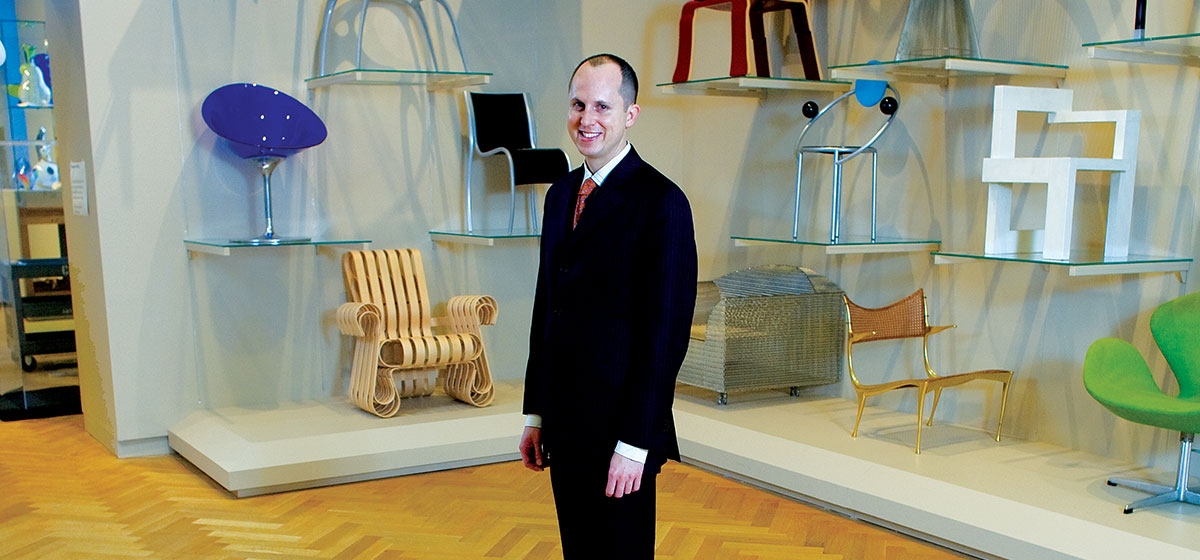
When Ailsa Mellon Bruce died in 1969, she left behind a collection of fine and decorative arts that was as extraordinary as it was extensive. The daughter of U.S. Secretary of the Treasury Andrew Mellon and sister of the equally noted collector Paul Mellon, she had spent much of her life and considerable fortune amassing a wondrous assortment of objects.
Their fate was the subject of much speculation when former curator David Owsley and Jim Walton, then president of the Carnegie Institute and a member of the Mellon family, intervened successfully. While her paintings went to the National Gallery that was founded by her father, nearly 3,000 objects came to the Carnegie Museum of Art.
Though Mrs. Bruce made her primary residence in New York, it was fitting that her gift went to the city where the Mellons had made their millions. “Her collection changed the landscape of the museum overnight,” says Jason Busch, The Alan G. and Jane A. Lehman Curator of Decorative Arts at the Carnegie.
Busch joined the museum staff three years ago, lured by the prospect of creating a permanent exhibition space in which to display the collection, as well as objects donated by other patrons or purchased through the years by previous decorative arts curators including Owsley, Phillip Johnston and Sarah Nichols, and Busch himself.
The Ailsa Mellon Bruce Galleries re-opened Nov. 21 with a splendid new look fueled by the latest thinking on how to showcase both the history and beauty of the collection. Inspired by exhibitions and installations throughout America and Europe, Busch combines paintings, works on paper and architectural drawings with furniture, porcelain, glass, wood, metal and decorative objects in other mediums in four galleries.
The chronological arrangement provides a unique perspective on American and European art, beginning with the Rococo and Neo-Classical styles of the 18th century and continuing through Modernism and contemporary craft and design of the 20th and 21st centuries. In all some 500 artworks will be on display including those in the first gallery, which will feature changing exhibitions. The inaugural exhibit comprises 18th century French furniture and German porcelain owned by Mrs. Bruce, important early Pennsylvania decorative arts and selections from the museum’s substantial collection of seating furniture.
The galleries’ 8,000 square feet will play to the Carnegie’s strengths, decorative arts from the 1740s to the present, and to the region’s history. An outstanding example is a suite of gilded furniture (c. 1825) from PicNic, the home of Mary Schenley (who owned the land that is now Schenley Park). Rather than re-create the formal parlor, Busch decided to render it in a life-sized elevation painted onto the walls. “I thought it would work really well—it was almost to the inch the length of the original parlor and one half of the width. It’s meant to be more of a window into what this room would have been like, and to evoke a period room without bricks and mortar.”
The effect is modern and unstuffy, which is true of all the galleries. Subdued blue and moss-green walls, wood floors and giant arched windows bring warmth and light into the space. Cases holding colorful contemporary glass are set against the window for natural illumination. Videos, an interactive stained glass exhibit featuring window panels by Louis Comfort Tiffany, along with selections such as Marc Newson’s Lockheed Lounge from the museum’s significant collection of aluminum objects, meld the present with the past. What visitors won’t see is the state-of-the-art storage and study facility in the basement that houses some 6,000 objects in 60 cabinets and specially-designed shelving. More than two dozen curators and specialists were brought in to evaluate the collection and offer guidance.
“The collection literally told me how it wanted to be installed,” Busch says. “We all have chairs and plates and lamps, but perhaps we haven’t realized what those objects tell us about a particular moment in terms of aesthetics, technology and innovation. Craftsmanship is timeless. The balance of design, manufacture and ornamentation has been standard in the work of gifted artisans for centuries. But in many places they haven’t been highlighted as they have at the Carnegie.”
Then again, not many museums have been charged with the mission bequeathed by Andrew Carnegie, who was interested in collecting art from his time forward: “To display the old masters of tomorrow.”





